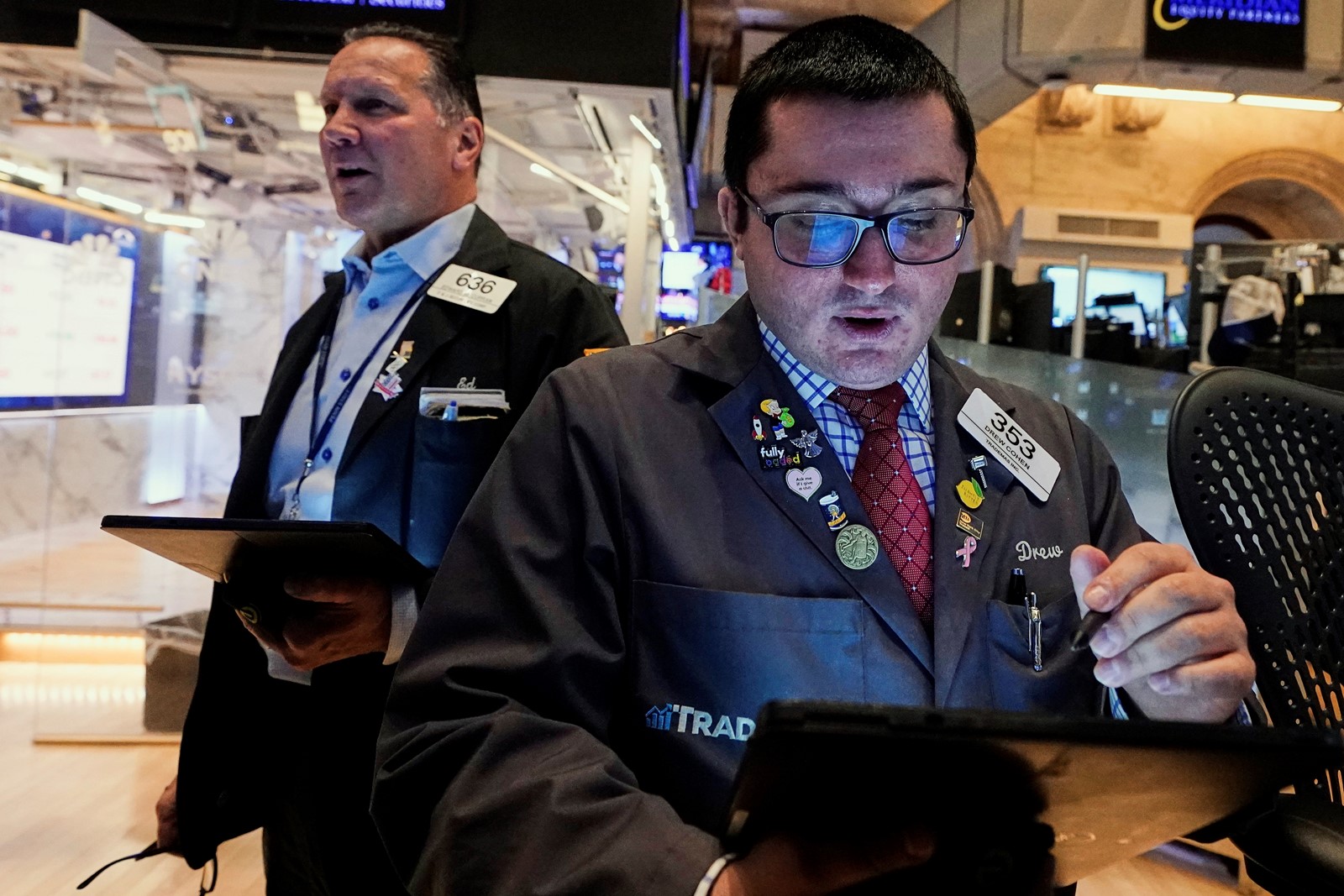
U.S. stocks jumped Friday in another manic day on Wall Street, while the falling value of the U.S. dollar and other swings in financial markets suggested fear is still high about escalations in President Donald Trump’s trade war with China.
The S&P 500 rallied 1.8%, after veering repeatedly between gains and losses, to cap a chaotic and historic week full of monstrous swings. The Dow Jones Industrial Average went from an early loss of nearly 340 points to a gain of 810 before settling at a rise of 619 points, or 1.6%, while the Nasdaq composite jumped 2.1%.
Stocks kicked higher as pressure eased a bit from within the U.S. bond market. It’s typically the more boring corner of Wall Street, but it’s been flashing serious enough signals of worry this week that it’s demanded investors’ and Trump’s attention.
The yield on the 10-year Treasury topped 4.58% in the morning, up from 4.01% a week ago. That’s a major move for a market that typically measures things in hundredths of a percentage point. But Treasury yields eased back as the afternoon progressed, and the 10-year yield regressed to 4.48%. That’s still higher than the day before, but not by as eye-wateringly much.
More worryingly, the value of the U.S. dollar also fell again Friday against everything from the euro to the Japanese yen to the Canadian dollar.
That’s even though gold, another place where investors have instinctually flocked when fear is high, rose to bolster its reputation as a safer haven.
The shaky trading came after China announced Friday that it was boosting its tariffs on U.S. products to 125% in the latest tit-for-tat increase following Trump’s escalations on imports from China.
All the uncertainty caused by the trade war is eroding confidence among U.S. shoppers, which could affect their spending and translate into damage for the economy, which came into this year running at a solid rate.
A preliminary survey by the University of Michigan suggested sentiment among U.S. consumers is falling even more sharply than economists expected. “This decline was, like the last month’s, pervasive and unanimous across age, income, education, geographic region, and political affiliation,” according to the survey’s director, Joanne Hsu.
Friday’s swings came after a set of stronger-than-expected profit reports from some of the biggest U.S. banks, which traditionally help kick off each earnings reporting season.
JPMorgan Chase, Morgan Stanley and Wells Fargo all reported stronger profit for the first three months of the year than analysts expected. JPMorgan Chase rose 4%, Morgan Stanley added 1.4% and Wells Fargo lost 1%.
Another report on inflation also came in better than expected. That could give the Federal Reserve more leeway to cut interest rates if it feels the need to support the economy.
But Friday’s report on inflation at the wholesale level was backward looking, measuring March’s price levels. The worry is that inflation will rise in coming months as Trump’s tariffs make their way through the economy. And that could tie the Fed’s hands.
The University of Michigan’s survey suggested U.S. consumers are bracing for inflation of 6.7% in the year ahead. That’s the highest forecast since 1981, and such expectations can create a feedback loop that pushes inflation higher.


 PREVIOUS ARTICLE
PREVIOUS ARTICLE
